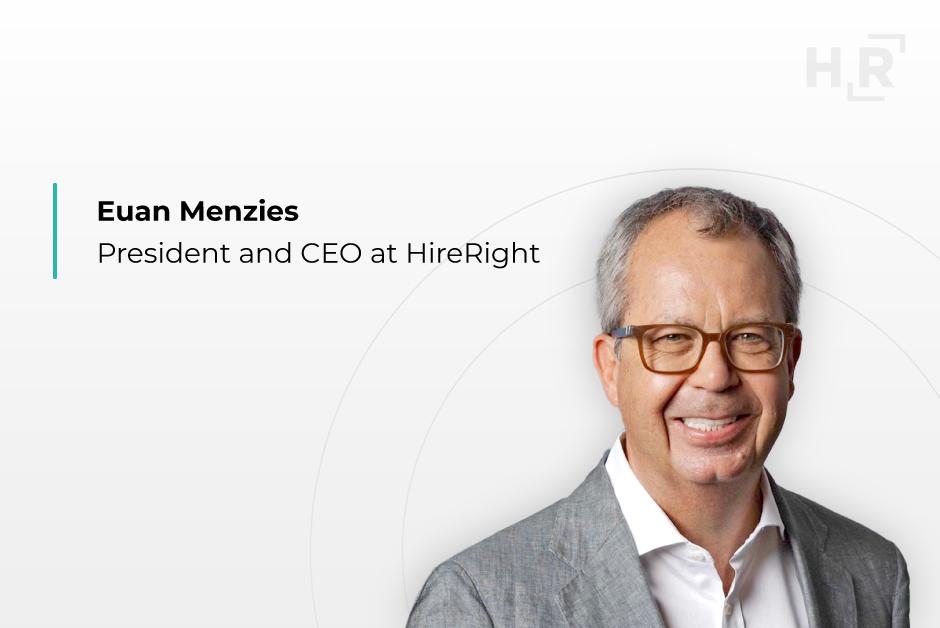HireRight Releases 2025 Global Benchmark Report
In June 2025, HireRight released its 18th annual Benchmark Report. Euan Menzies, HireRight’s President and CEO, introduces some of the key topics that readers can expect to find out more about in this year’s global report—as well as a sneak peek at some of the key survey findings.

A warm welcome to HireRight’s 2025 Global Benchmark Report!
First, thank you to everybody who took the time to take part in our 18th annual Benchmark Survey earlier this year. We couldn’t create this report and share the latest insights into hiring, screening, and talent management trends without our survey respondents’ valuable input.
Each year, our Global Benchmark Report compares the findings of our annual survey’s respondents from North America (the U.S. and Canada), Europe, the Middle East, and Africa (EMEA), and Asia-Pacific (APAC) with each other—as well as against our previous years’ survey data—to help identify industry trends. This year, we added a key global takeaways page to the start of each section, to provide readers with an at-a-glance view of the most significant findings and explore new ground to home in on some topics we know are of interest to our customers.
In the opening section on background screening, we take a closer look closer at identity fraud, how often and where candidate discrepancies are found, and how companies are screening their contingent workforces.
Then, in the talent acquisition and workforce management section, we explore how organizations and their candidates are using AI tools in the recruitment process, examine the expected impact of market and economic uncertainty on hiring in 2025, and determine if and how the balance of office-based, hybrid, and remote working is shifting.
I hope you find this report a valuable tool to compare your company’s screening, recruitment, and workforce management activities to other companies, both within your region and globally.
Download HireRight’s 2025 Global Benchmark Report
Key Background Screening Takeaways
Accuracy is the top priority when choosing a background screening provider. Accuracy of results has held its position as the most frequently cited priority for employers when choosing their employment screening provider. Compared with our 2023 and 2024 survey findings, fewer respondents said that cost is a major consideration this year, suggesting that more businesses have accepted that accuracy may come at a higher cost.
Criminal record checks are the most common checks included in pre-employment screening programs. Almost nine out of 10 respondents globally conduct criminal record checks on their new hires. Employment and education checks complete the top three in EMEA and APAC, but in North America, these checks are notably less common.
Many businesses are still not conducting identity checks despite rising levels of ID fraud. Only three in five respondents said their company conducts identity checks as part of its pre-employment screening program. Worryingly, one in six respondents said their business has experienced ID fraud as part of their hiring process, and an additional three out of 10 were unsure.
More than three-quarters of businesses have found candidate discrepancies during the screening process in the last 12 months. Globally, 13% said they found on average at least one discrepancy per every five candidates. Undisclosed criminal convictions and education and employment discrepancies were the most common types of candidate inconsistency identified.
Most businesses that have a contingent workforce do screen these workers, but the most common process varies from region to region. Companies in North America are most likely to screen their contingent workers via their vendor’s chosen screening provider. In EMEA and APAC, they are more likely to screen them via their company’s screening provider.
Find out more about these insights, as well as the key trend in talent acquisition and workforce management identified in our 18th annual survey, by downloading our latest global report.
